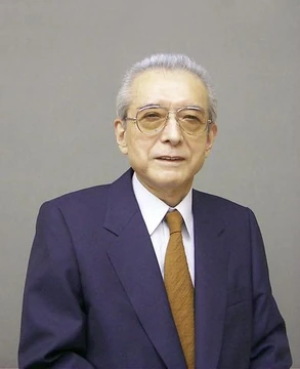Hiroshi Yamauchi

| |
| Hiroshi Yamauchi | |
| Known for | 3rd President of Nintendo (1949-2002) |
|---|---|
| Birth | November 7, 1927 |
| Death | September 19, 2013 |
Hiroshi Yamauchi (山内 溥, Yamauchi, Hiroshi, November 7, 1927 – September 19, 2013) was the third president of Nintendo.
Early life
Hiroshi Yamauchi was born on November 7, 1927, to father, Shikanojo Inaba, and mother, Kimi Yamauchi. His father abandoned him, and because his mother couldn't cope with raising him as a single mother, he was raised by his grandparents.
Becoming President of Nintendo
In 1949, Hiroshi Yamauchi's grandfather, Sekiryo Yamauchi, retired as president of Nintendo Koppai following a stroke. The former then took over as president of the company.
Attempting to expand Nintendo's business
In 1951, Nintendo Koppai was renamed Nintendo Playing Card Co., Ltd. In 1952, Nintendo's manufacturing companies, which were spread throughout Kyoto, were consolidated into facilities in three wards in Kyoto. After the consolidation of manufacturing companies in 1953, Nintendo became the first company in Japan to mass-produce plastic playing cards.
In 1956, Hiroshi Yamauchi traveled to the United States and visited the United States Playing Card Company, the world's largest playing card manufacturing company at the time. He was disconcerted after the visit, since the world's largest playing card manufacturing company was being run out of, in his opinion, a small office. Thus, he realized that the playing card business was a niche business without much chance for growth.
In 1963, as a result of the plan by Hiroshi Yamauchi to expand, "Playing Card" was removed from the name of the company, and the company became Nintendo Co., Ltd. They expanded beyond card games by buying companies in a variety of industries, including becoming the principal operators of the Daiya taxi firm, buying a food company that sold packets of instant rice, buying a television network, and buying a chain of love hotels. The latter were hotels that offered privacy to their guests by not keeping a record of names, akin to the "no-tell motels" in North America. All of these ventures failed, the companies owned by Nintendo dissolved, and Nintendo's stock fell to its lowest recorded value of 60 yen in 1964.
Nintendo enters the toy industry
To turn the company around, Hiroshi Yamauchi formed Nintendo's first research and development department, the Nintendo Games department, and entered the Japanese toy industry in 1964. In 1966, the "Ultra Hand", a toy designed by Gunpei Yokoi that had an extending arm that could be operated like scissors to pick up objects became the highest-selling toy in Japan. This resulted in Nintendo's expansion in 1968.
Nintendo enters the arcade market
In 1970, Nintendo entered an agreement with Sharp Electronics to use Sharp light sensor technology in toys. In 1974, Nintendo's Beam Gun light guns were adapted for sale to arcades as the Simulation System.
The success of Donkey Kong in 1980 led Nintendo to become a success worldwide.
Nintendo produces video game consoles
Nintendo was involved in the first generation of video game consoles with the Color TV-Game line of consoles based on Pong, Breakout, and Othello from 1977 to 1980. Its second-generation handheld console was the Game & Watch line, which ran from 1980 to 1991.
However, Nintendo's third-generation console made it a household name. The Family Computer was released in Japan in 1983 and became a worldwide success as the Nintendo Entertainment System beginning with a North American release in 1985.
Under Hiroshi Yamauchi, Nintendo continued to release video game consoles, most of which were successful, throughout the fourth and fifth generations.
Retirement and death
In 2002, Hiroshi Yamauchi retired and the former president of HAL Laboratory, Satoru Iwata, became president of Nintendo.
Yamauchi died on September 19, 2013, due to pneumonia.